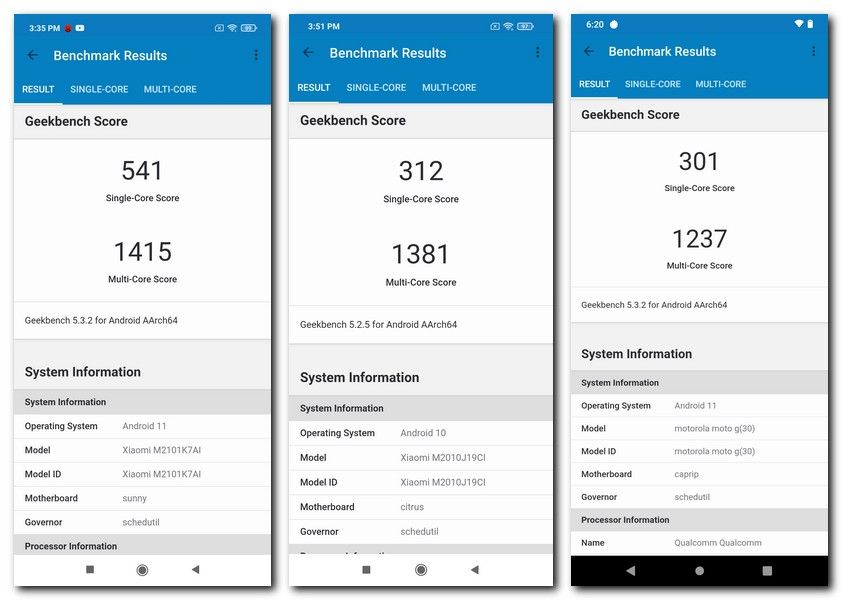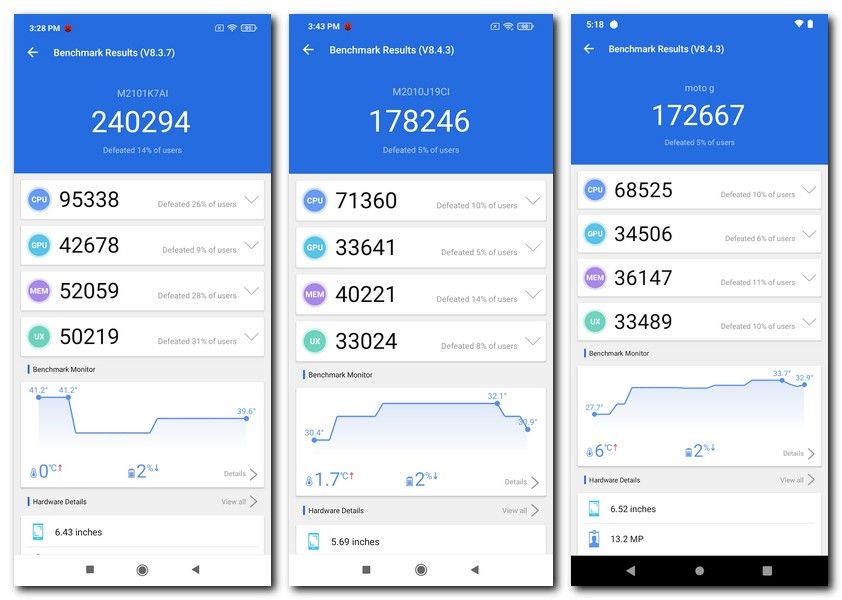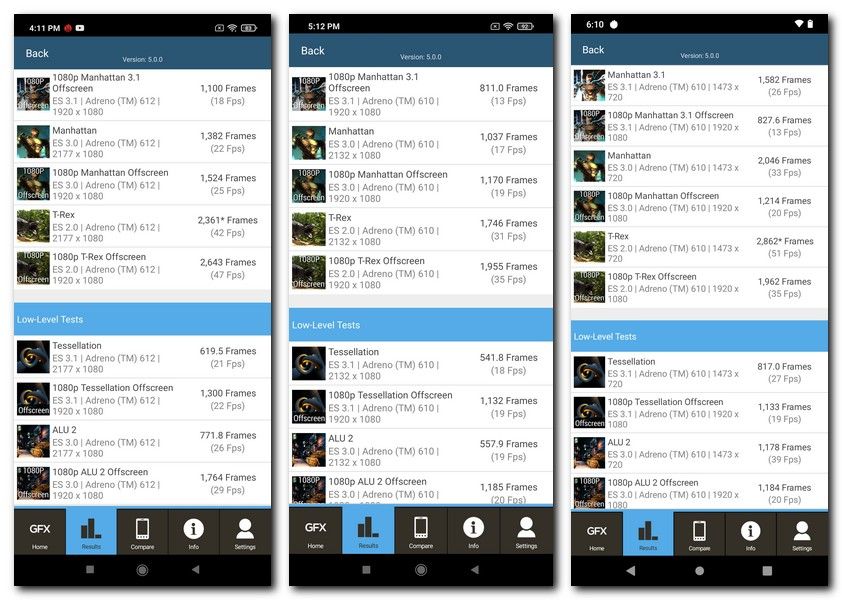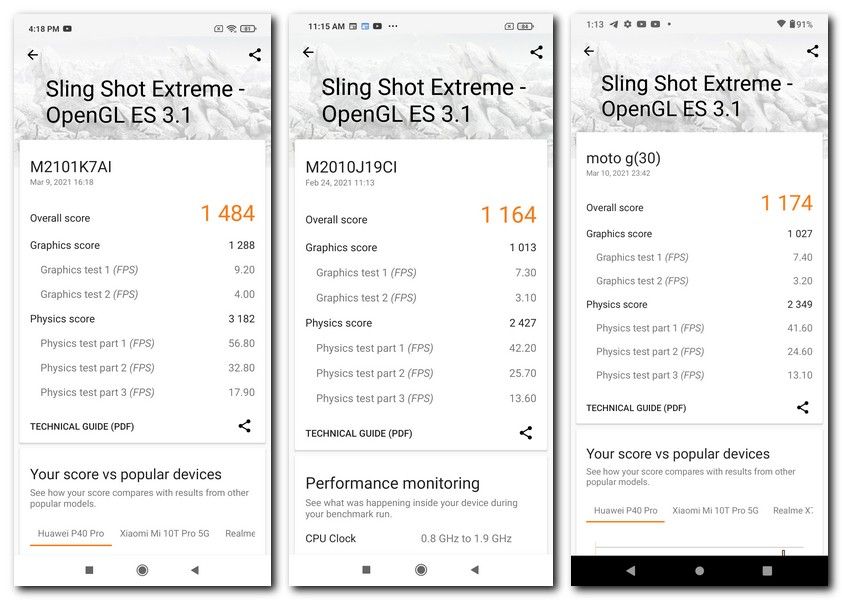
Xiaomi has just unveiled a trio of smartphones in its popular Redmi series. I, in particular, was quite excited to check out the Redmi Note 10, which is the most afordable of the lot, to test out how good the performance is. You see, the Redmi Note 10 is India’s first phone with Qualcomm’s Snapdragon 678 chipset. The SoC comes with a better GPU and faster-clocked CPUs as compared to some of the competing smartphones. The Note 10 is priced starting at Rs 11,999 for the 4GB RAM + 64GB storage version, and competes with the recently-launched Moto G30 and the popular POCO M3 (review) smartphones. Let’s see how capable the new chipset on the Redmi Note 10 is and pit it against its closest rivals using gaming and benchmarks.
Table of Contents
Benchmarks
Benchmarks provide a handle on the performance of a smartphone and provide scores which can be used as metric while comparing with other devices. As usual, I’m going to use the popular synthetic tests: Geekbench 5, Antutu, GFXBench, and 3DMark.
Geekbench 5

The octa-core Snapdragon 678 chipset packs in two performance Cortex A76 cores spinning at 2.2GHz while the rest are Cortex A55s clocked at 2.0GHz. Both the Moto G30 and POCO M3 pack in the Qualcomm Snapdragon 662 chipset that has four older Cortex A73 cores for performance needs and four Cortex A53s for efficiency. The SoCs all are made using an 11nm manufacturing process so power efficiency should remain mostly the same. However, the Thermal Design Power (TDP), which measures how much power in Watts the chipset draws under normal load, is different on both. The Snapdragon 678 has a TDP of 6W as compared to 9W on the Snapdragon 662, which indicates that the former has lower power consumption.
The Redmi Note 10 gets a very impressive score of 541 for single-core usage and 1,415 for multi-core usage. In comparison, the POCO M3 got 312 and 1,381 respectively in both tests while for the Moto G30 it was 301 and 1,237. The single-core performance on the Snapdragon 678 is nearly double that of the other two while multi-core scores remain just about the same.
Antutu

Apart from a better CPU, the Snapdragon 678 also has a slightly better GPU with the Adreno 612 handling graphical tasks. The Moto G30 and POCO M3 contend with the Adreno 610 that is clocked at 600MHz as compared to the 800MHz on the 612. This does mean about 25 percent bump in GPU clock speeds for the Redmi Note 10, and that could play a part in the overall score while running Antutu. As expected, the Redmi busts out a huge score (for its price) of 240,294, which is much higher than the Moto G30’s 172,667 or the POCO M3’s 178,246. With a CPU score of 95,338 the Note 10 is in a different league than the G30 and M3, which have scores of 71,360 and 68,525. That’s nearly 30 percent better performance while the GPU score sees a 20 percent jump.
GFXbench and 3DMark

For further proof of the Redmi Note 10’s Snapdragon 678 offering better graphics perfromance, I turned to GFXBench and 3DMark, both of which place significant stress on graphics capability. The popular T-Rex and Manhattan tests returned a count of 42fps and 22fps respectively on the Redmi Note 10. To my surprise, the Moto G30 actually showed slightly better scores of 51fps and 33fps on the tests while the POCO M3 performed the worst at 31fps and 17fps.

On 3DMark I ran the SlingShot Extreme test and this time the Redmi Note 10 came out higher with an overall score of 1,484 which is nearly 21 percent more than the Moto G30’s 1,174. The POCO M3’s score of 1,164 kept pace with the G30. I could make out that the Physics score, a metric of CPU performance, was the highest on the Snapdragon 678-powered Note 10 at 3,182. In comparison, the G30 and POCO M3 were at 2,349 and 2,474.
It would appear from all the tests, the Redmi Note 10’s CPU performance is quite good as compared to its competition. The GPU doesn’t fare that well although, in most tests, it is still the top-performer. Let’s take it a step further with some gaming tests on all three devices.
Gaming
For the purpose of this test, I am going to test Call of Duty Mobile (CoDM) and the phone’s ability to run the title at its highest possible graphics and frame rate. Do keep in mind that these are budget devices and not exactly designed for hardcore gaming.
Call of Duty: Mobile

Looking at the kind of Graphic Quality (GQ) and Frame Rate (FR) options the phone supports, it is quite apparent initially that the Redmi Note 10 has the upper hand. You can essentially play at Max FR setting if you keep the GQ at High, although you can push the latter to Very High if the FR is reduced from Max to Very High. In comparison, the POCO M3 and G30 only allow only a High option for FR while the GQ can go to Very High. However, the Note 10 does not manage a crisp 60fps, as expected at Max FR, for very long. In fact, I started seeing considerable frame drops after just 10 minutes of playing. You can always reduce the GQ option if detailing is not very important for you. In any case, the experience was definitely better than the M3 or G30 in terms of gameplay. I played a 30-minute session on each device. Talking about battery drain first, the Note 10 is just ahead with a 14 percent battery drop as compared to the G30’s 17 percent drop during 30 minutes of gameplay. The POCO M3 had an 11 percent drop but it also packs in a bigger 6,000mAh cell as compared to 5,000mAh on both the other devices. The real measure was seeing the rise in temperature which was the least in the case of the Redmi Note 10. The phone gained only 8 degrees while the POCO M3 ran hot showing a gain of 14 degrees, while the Moto G3’s temperature rose by 12 degrees.
Final Verdict
The Redmi Note 10 is definitely a phone worth investing in if you’re looking for smooth performance on a tight budget. It certainly seems that CPU-intensive tasks work faster on the Note 10 than its aforementioned rivals. You get better graphic options as well although, under sustained load, you are likely to see some frame drops. Overall, the Redmi Note 10 emerged as the winner in this comparison. Keep an eye out for our detailed review of the new smartphone, coming up soon.













